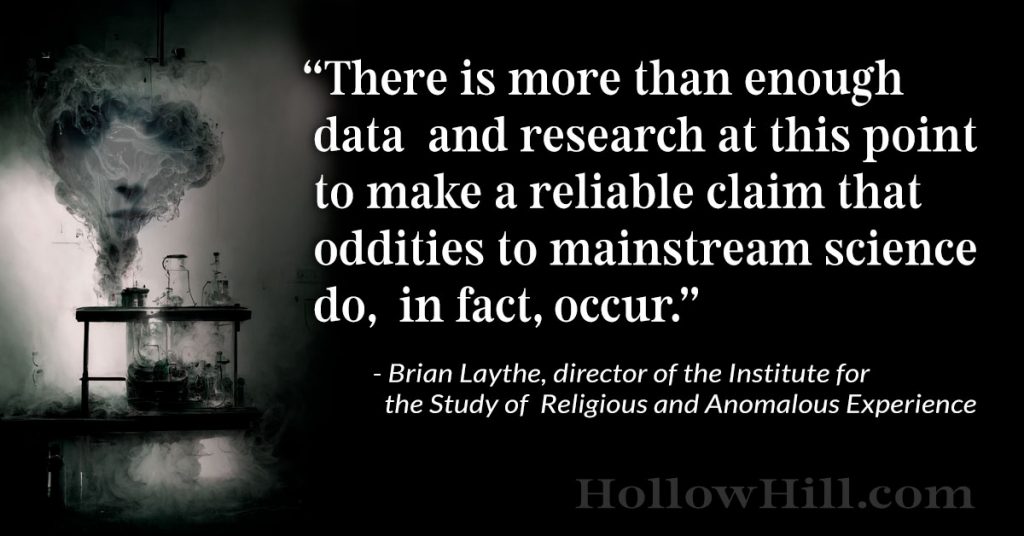As an Amazon Associate I earn from qualifying purchases. Click for details.
In a 2021 poll of Americans, slightly more people believe in demons (43%) than in ghosts (41%).
However, when we include those who answered “not sure” (as opposed to “don’t believe”), the numbers are equal… 65%, whether the question is about demons or ghosts.
That’s a lot.
In other words, the majority of Americans are willing to believe that supernatural beings exist, even if they’re not 100% certain… yet.

Of course, those were American studies.
People in other countries may have different views.
For example, an informal study of British people suggested that 50% of Brits believe in ghosts, and – interestingly – only 23% are afraid of them.
A more reliable – but older – British study [PDF] showed that 34% of Brits believe in ghosts… and 39% believe a house can be haunted. (Umm… how can a house be “haunted” if there are no ghosts? <– Rhetorical question.)
I tried to find statistics for France, but that led to generalizations that “the French don’t believe in ghosts, and pride themselves on their rationalism,” while – at the same time – finding plenty of reported ghosts in that country.
However, statistics suggest that 46% of Canadians believe in ghosts or supernatural beings.
What would make you believe in ghosts?
If you’re reading this article, you probably believe – as I do – that something odd is going on at haunted sites.
And, at many of those places, there’s no reasonable explanation for the ghost-like phenomena. We have to consider ghosts as a legitimate answer.
Some people don’t take a “good scare” seriously. They’re more comfortable laughing it off, if they can.
However, an encounter with a deceased relative can lead them to believe in ghosts… but not always.
In addition, some refer to the latter as a “spiritual” experience, while rejecting the idea of ghosts and hauntings.
Is that a matter of semantics, or religion, or something else?
Is science the answer?
In my decades of paranormal research, persistent ghost hunting – even by the most skeptical – seems to lead to a belief in ghosts.
By contrast, nearly every snarky non-believer I’ve met has been on just one actual ghost investigation, or a few light-hearted ghost tours.
In the light of day, it’s easy for them to dismiss anything baffling or alarming they’d encountered.
While I maintain that the best ghost hunting experiences are those that have a personal impact, it’s also clear that ghost hunting equipment is important, for baselining.
Why should ghost hunters “baseline” haunted sites?
When we “baseline” a haunted site, we’re using scientific equipment – sometimes sold as “ghost hunting equipment” – to look for anything odd, abnormal, or weird that’s already at the location.
So, before an investigation, you’ll need EMF devices, audio recorders, carbon monoxide detectors, carpenter’s levels, measuring devices, and so on.
You’ll also need any past evidence of ghostly activity at the site. That could be stories, weird videos, strange photos, odd recordings, and so on.
Even before you actually look for ghosts, you need to analyze that evidence and see which of them can be explained.
For example, if someone is convinced that the stairs in their home are haunted, you’ll look for a physical cause.
Here’s how…
Do all that BEFORE you start a formal ghost investigation.
That will save you time and embarrassment. (On more than one ghost hunting show, I’ve seen professional ghost hunters get fooled by people – and TV producers – who deliberately rigged their home to seem “haunted.”)
After ruling out normal (if odd) aspects of a haunted site, real ghost hunters do this…
We keep looking for non-ghostly reasons a site seems haunted.
Yes, you’ll do more of the same, just in more depth.
- Seek more results.
- Look for patterns that may result in normal (but unusual) explanations.
- Identify those that defy explanation.
- Follow-up with more research efforts at the same locations or similar ones.
Then, with enough evidence that we can’t explain, we’re led to the next level of research, and so on.
It’s like peeling an onion, and the outer layers – normal (if odd) explanations – must be considered.
Ghostly “oddities” DO exist.
Most people agree that ghost-like “oddities” exist outside mainstream science.
Whether some of them are actual ghosts… that’s another matter.
For now, an open-minded scientific approach can be helpful. (Of course, remain sensitive to the possibility that what we’re encountering may be sentient beings, and could be ghosts.)
Keep investigating. Keep gathering – and analyzing – evidence.
That’s the best way to find answers, whether or not you’re among the apparent majority who already believe.
